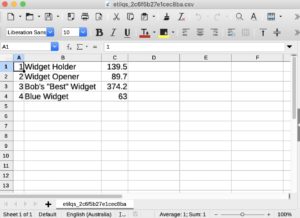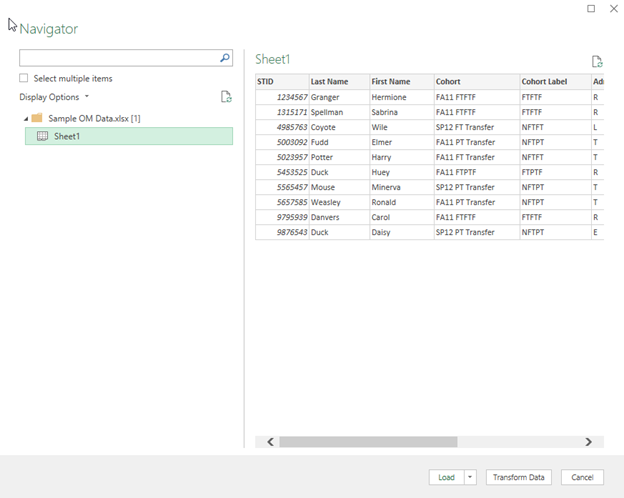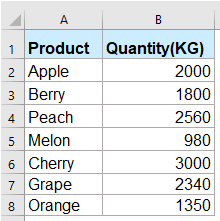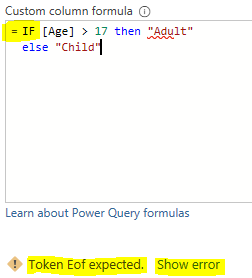
- EXCEL 2016 QUERY EDITOR MATCHING KEYS HOW TO
- EXCEL 2016 QUERY EDITOR MATCHING KEYS INSTALL
- EXCEL 2016 QUERY EDITOR MATCHING KEYS CODE
- EXCEL 2016 QUERY EDITOR MATCHING KEYS PLUS
If we click on close and load, we’ll import this data into Excel.ĥ.
EXCEL 2016 QUERY EDITOR MATCHING KEYS PLUS
Now, we have a new table with all the information we had before, plus the population of the country for each record. Click on the corner of the header for this new column and select the fields that you want to merge. You will get a new Query Editor window with a new column. Before clicking OK Power Query already tells us that we have 40 matching records. Also select “Only include matching rows” so we get population just for the list of countries we have. This will be the the field that will define the merge so we can get country population on our original table. On the merge menu, select each query and then click on the country field for both. Click on the Merge button on the Power Query menu.Ģ. The file provided already has another query (found with Online Search) with the population of countries called “Population by Country”. First, we will merge this query with another one that has the country population on it. We will take a look at 2 of them: Append and Mergeġ. There are several ways to combine data in Power Query. Finally, you will notice that Power Query is saving all of these steps to be replicated on your data refresh or modified in the Applied Steps panel In any case, you can use the Query Editor to save these steps through the UI and Power Query will take care of the formulas for you.ĥ. You can find more information and references here. The Power Query Formula Language provides a lot of flexibility to shape and transform your data. You will see the newly added column after you click OK and the function being showed in the formula bar.
EXCEL 2016 QUERY EDITOR MATCHING KEYS CODE
We are joining the city name and the country code with a dash in the middle. On the add custom column menu, write the following expression: &”-“&. Click on add custom column on the column menu.ģ. In Excel, this would be a text operation with the “&” symbol. Now, let’s create a Key with our country code and the city name. Then right click on one of them and select Remove Columns on the menu:Ģ. In this case, holding down the Ctrl key select the Image and Key fields. First let’s remove columns that we don’t want to use. Let’s try other transformations available within Power Query.ġ. We did that on step 1 with a simple formula. You can perform almost any type of operation with columns on the Query Editor to shape and transform your data any way you like it. You can also perform other grouping operation such as sum, average, min or max on a field (in this example we could do that with population): In this case, we’ll just count how many records we have by country. Right click on the country column header and select “Group By”Ĥ. You can also use the same menu to sort your data (ascending or descending).ģ. When you click OK, you’ll have the filtered list. Select the Country column, click on the down arrow, deselect (Select All) and choose Brazil, Chile and Ecuador.Ģ. For any given column you can click on the down arrow and start filtering or sorting right away. You can modify this formula directly in the formula bar or selecting in Applied Steps the step you want to edit and clicking the gears iconįiltering on the Query Editor is very similar to Excel. Type the following formula = Table.AddColumn(Source, “Country Code”, each Text.Start(, 3)) and click on the check symbol to the left of the formula bar – This formula will extract the first 3 characters of Country and place them in a new columnĥ. Click on the fx icon right next to the formula barĤ. Hover over the public data results: ‘Largest Cities…” and select edit, which will take you to the Query Editorģ.


Select the Power Query tab and perform the following online search: “largest cities south america”Ģ.
EXCEL 2016 QUERY EDITOR MATCHING KEYS HOW TO
If you don’t, just click the Workbook Queries button on the Power Query ribbon.įirst let’s do an online search to import and edit its query so we can learn how to create and modify formulas: 1.

If you are on one of the imported tables, you will see the Workbook Queries menu on your right.

Once you open the file, select Power Query from the ribbon. You can follow the getting started steps with the video or with the text on this post. Open the provided Excel file at the end of this post.
EXCEL 2016 QUERY EDITOR MATCHING KEYS INSTALL


 0 kommentar(er)
0 kommentar(er)
